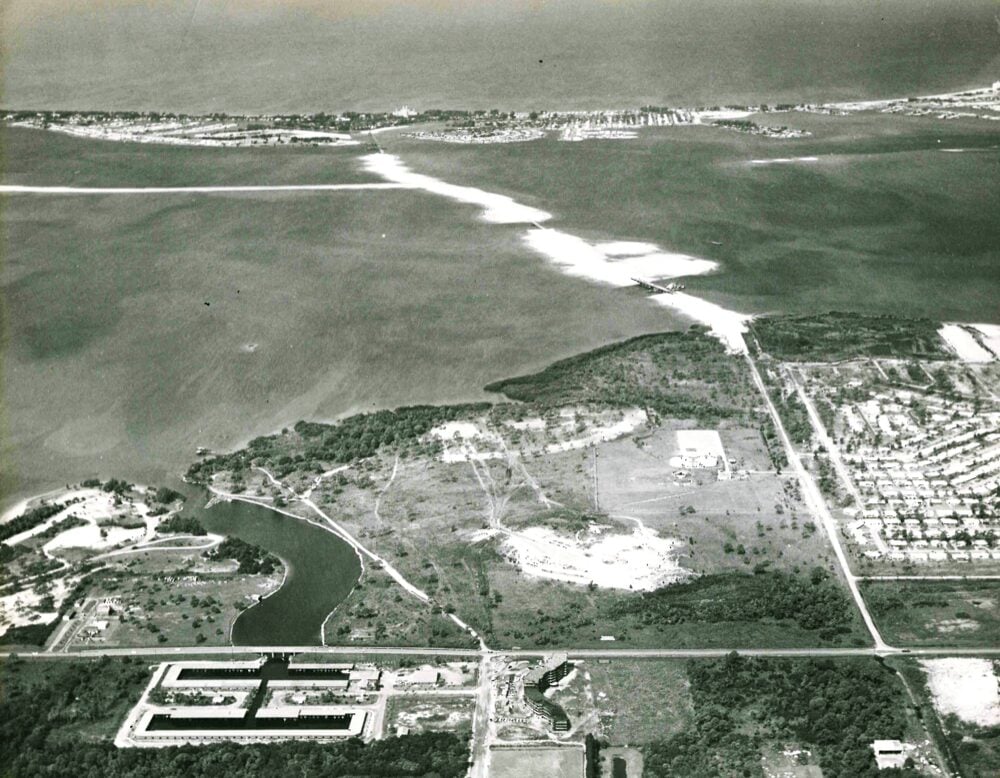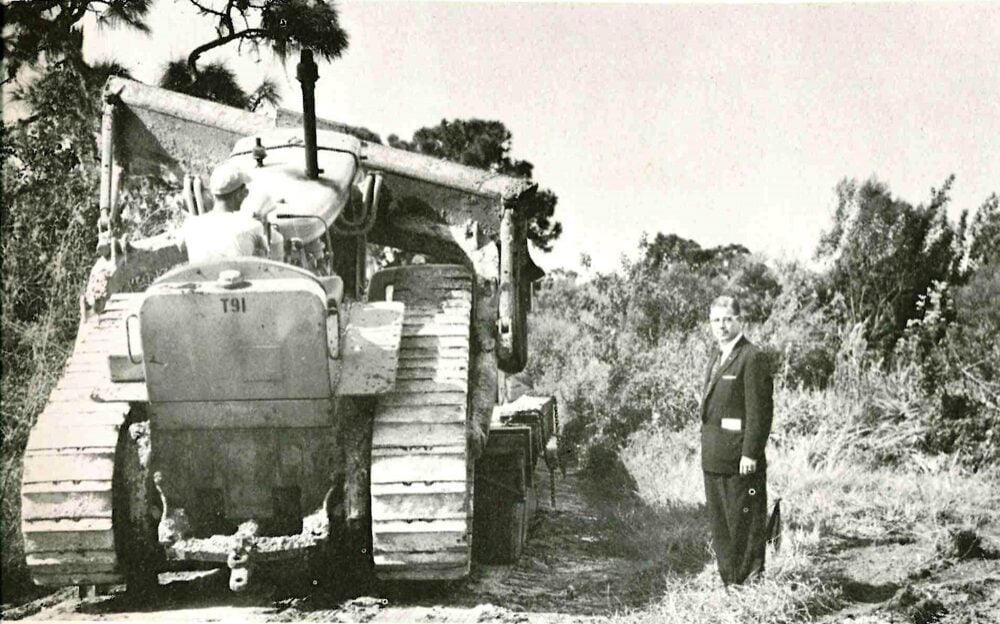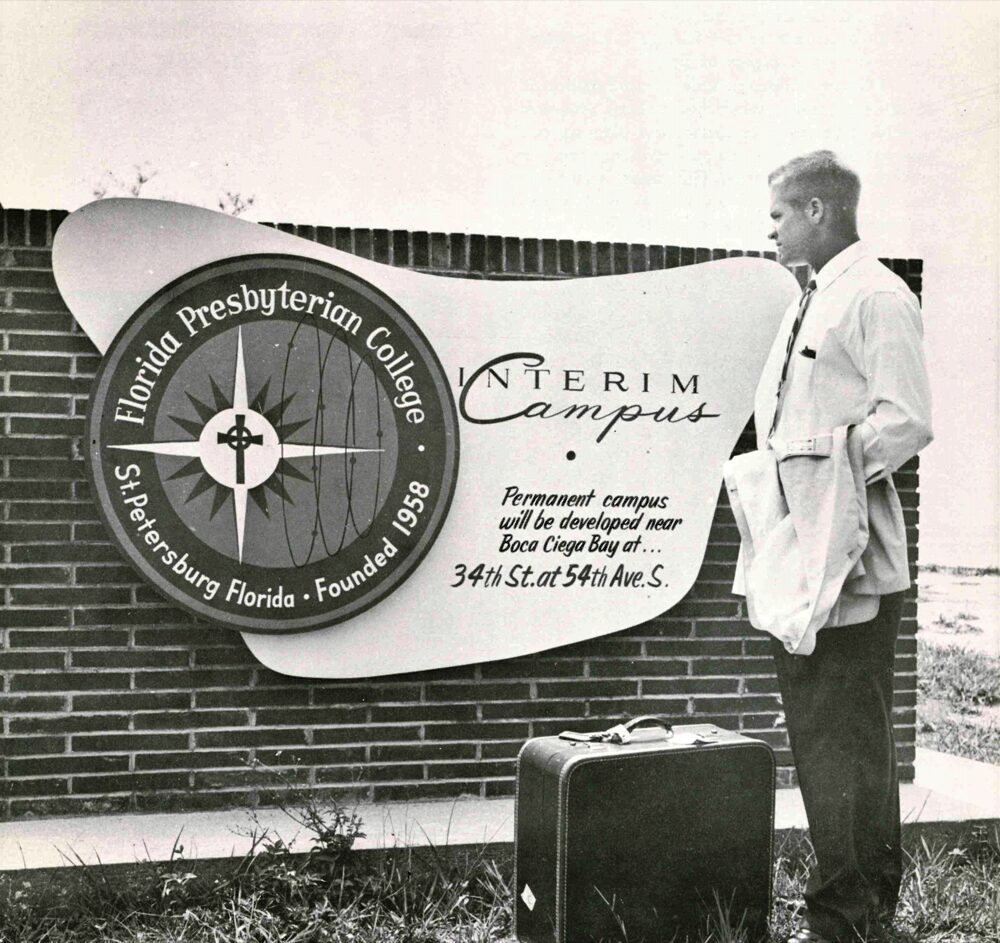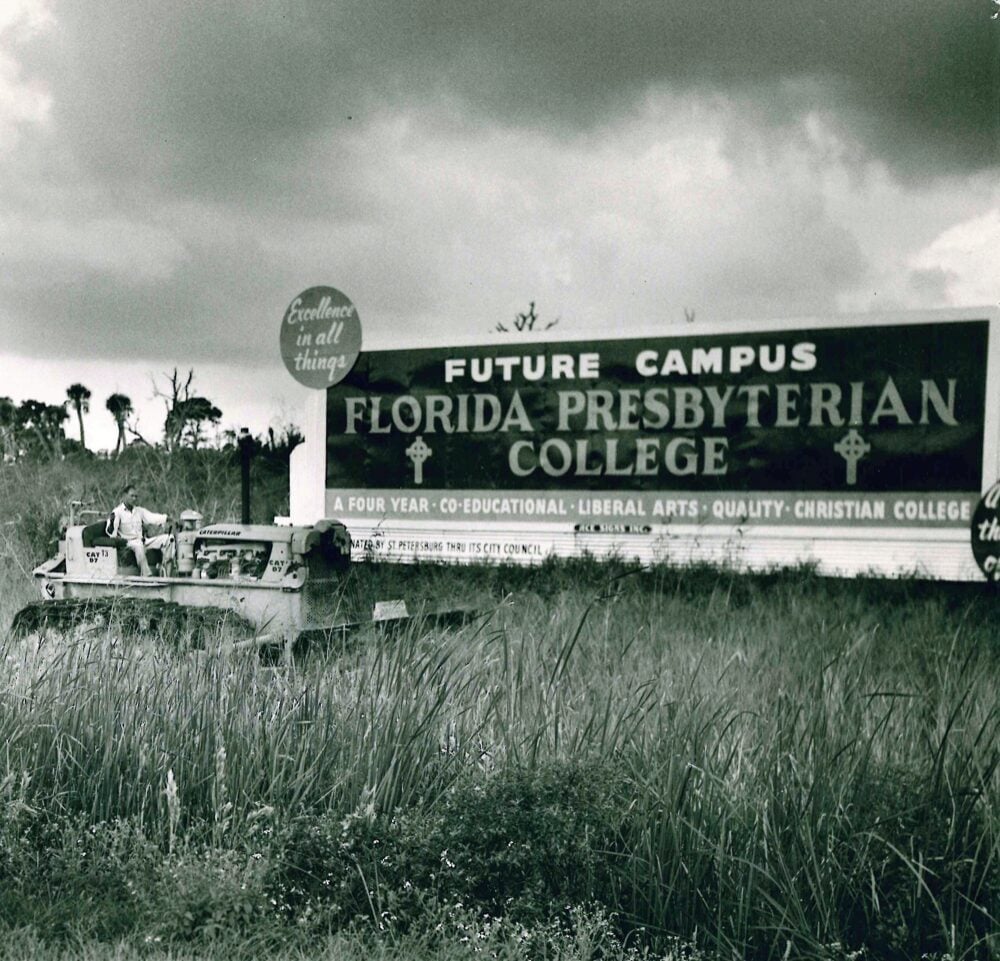My alma mater doesn’t have a war chant or a fight song. It doesn’t have stately lecture halls or teaching assistants. What it does have is a lush waterfront campus with its own beach. It has a volunteer search-and-rescue team, state-of-the-art science labs, and a brand-new, 33,000-square-foot arts complex. It has small classes, yellow bikes and “pitchers with professors”.
I’m talking about Eckerd College, and while it may not have the more traditional trappings of higher education, that’s because it is relatively young, founded just 60 years ago this month as Florida Presbyterian College (FPC). In light of this anniversary, I decided to learn more about the history of the college that brought me to St. Pete.
A book called On Solid Rock, by Stephanie Kadel Taras, Ph.D. (Eckerd alum and granddaughter of the founding president) provided the source material for this story.

Florida Presbyterian College
A few years before the Presbyterian Church voted to establish FPC in May of 1958, a man named Hunter Blakely had an idea. Working for the Church’s Board of Education, he noticed two things: Florida was experiencing rapid population growth, and it was the only state in the nation without a Presbyterian College.
As Blakely began to circulate the idea that Florida needed a Presbyterian college, he met a charismatic Orlando clergyman, Bill Kadel, who would become FPC’s first president. Kadel was instrumental selling the concept of FPC—when it was nothing more than a dream—to the people who would bring it to life.
One of these people was Jack Bevan, a professor from Davidson College in North Carolina, who almost single-handedly recruited the founding faculty. He traveled the country spreading Blakely and Kadel’s vague but passionate vision of a liberal arts college built on academic excellence, freedom of thought, and Christian values.

Bevan was persuasive, and lured many tenured professors away from established universities with little more than the promise of moving to sunny Florida to create a new kind of college from scratch.
Downtown Connection
Cities all over Florida wanted to host FPC, but St. Pete brought a couple of compelling gifts to the table. One, the city had 170 acres of land on Boca Ciega Bay to donate and, two, it offered a temporary campus to use while the college was being built: a former WWII maritime base at Bayboro Harbor, downtown.
It was the perfect solution, and St. Pete was chosen as FPC’s home.
In December 1959, the founding faculty would come together at the maritime base to hash out the college’s curriculum. FPC’s first freshman class of 155 young men and women began their studies at the interim campus in the fall of 1960.
As FPC developed the nearly untouched land off of 54th Avenue South for the permanent campus, its size was doubled by dredging sand from the bottom of the bay. At the groundbreaking ceremony in September 1961, Kadel made a joke of sorts by quoting Jesus’ Sermon on the Mount, which called men who built homes on rock wise, and those who built on sand, foolish. According to Taras, even though they were literally digging into sand, Kadel believed FPC’s foundation was solid because it was built on “its people, community support, faith in God, commitment to vision.”
He must have been right; by the beginning of FPC’s fourth academic year, in the fall of 1963, the permanent campus was ready for classes to begin.

A Sign of the Times
FPC’s founding faculty consisted entirely of white males, which was the norm at that time. However, they also tended to be progressive thinkers, and their personal understanding of Christianity meant treating all people as equals. While the South was still very segregated, they inherently believed FPC would be an integrated college. They could not envision it as a segregated institution; that was the old way of doing things!
However, when the first African American student applied for admission in 1962, the board of trustees voted against admitting him, although he was clearly qualified.
Standing up for what they knew was right, all but two faculty members submitted resignations to the board. Remember, these were professors who had left tenured posts to take a chance on FPC. Bevan, now dean of faculty, put his resignation on top of the pile.
After six months of deliberation between the faculty and the trustees, the board unanimously voted that admission would be considered “without regard to race, color or creed”, and the faculty withdrew their resignations. By then, the young man whose application had spurred the controversy, Howard Kennedy, had already joined the army, but he had set in motion an important debate that shaped the future of FPC.

FPC Becomes Eckerd
When Billy Wireman took over as FPC’s president in 1971, the college was in financial crisis. He needed a quick fix to keep it afloat. Jack Eckerd was a drugstore magnate serving on FPC’s board of trustees at the time. Wireman pursued Eckerd as a donor, and being a risk-taker at heart, Eckerd agreed to donate ten million dollars—the lifeline that FPC needed to survive.
While many assumed the name change was a condition of the gift, it was actually Wireman’s idea, and he had to convince Eckerd to allow it. By that time, the Church had relinquished control of the college to its trustees, and Wireman (for whom the campus’ iconic chapel is named) felt the old name actually hindered future growth. Eckerd finally agreed and in July 1972, FPC officially became Eckerd College.
Today, Eckerd College is one of the top liberal arts institutions in the country, and has been named among the elite group of Colleges that Change Lives (https://ctcl.org/). To learn more about this innovative young college, visit www.eckerd.edu.



